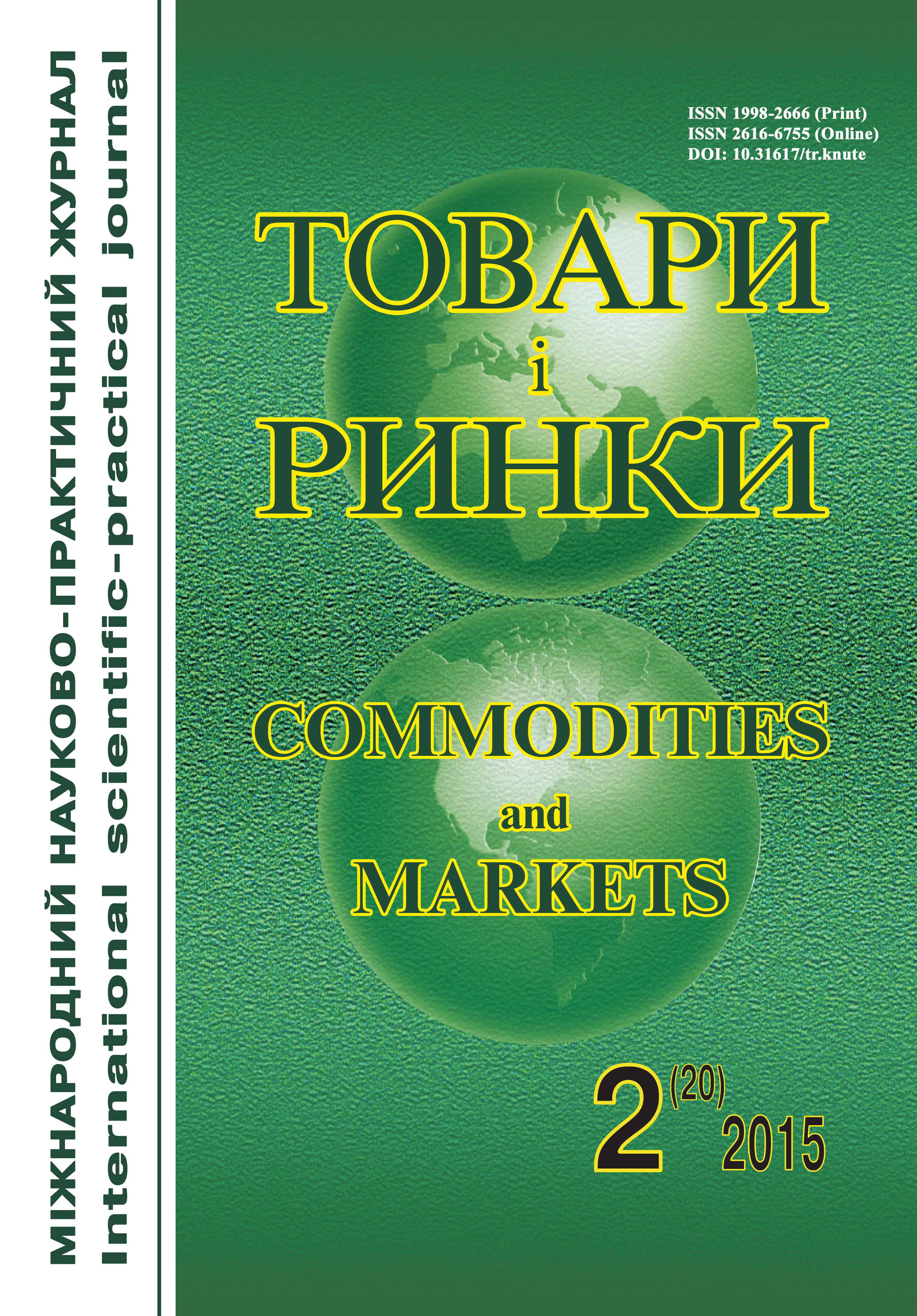Enzymes activity dynamics at aubergine processing
Keywords:
quick-frozen eggplant, ascorbic oxidase, polyphenol oxidase, ascorbic acidAbstract
Background. Managing directions and speed of biochemical processes helps minimize the loss of biologically active substances inherent in plant material, stabilize color, smell and taste during freezing and low temperature storage. To prevent unwanted enzyme changes in the eggplant processing instead of blanching holding them in a salt solution prior to freezing was proposed. The effect of pre-treatment to reduce ascorbic acid ascorbic oxidase and polyphenol oxidase activity and preservation of color and vitamin C-value of frozen products has been studied.
The aim of the study is scientific substantiation of method of reducing the activity of eggplant enzymes to obtain frozen products with minimal loss of vitamin value and change of organoleptic properties.
Material and methods. Object of study – eggplant of Almaz variety. We determined ascorbic oxidase activity, polyphenol oxidase (in arbitrary units – mmol ascorbic acid oxidized for 1 min) by Pochynok [12], ascorbic acid content by standard [13]in eggplant without treatment (control sample) and soaked in a solution of sodium salt (research sample) prior to freezing and for 9 month low-temperature storage every 3 months.
Results. Duration of eggplant exposure and optimal concentration of salt solution was determined on the basis of experimental results and application of methods of correlation and regression analysis and mathematical modeling, namely 9 min in 3 % salt solution.
In eggplant during freezing and after 9 months low temperature storage losses without the use of ascorbic acid pretreatment are 39 %, with the use of it – 27%.
During freezing ascorbic oxidase activity in eggplant without treatment decreased 2.4 times, in soaked in salt solution – 5.3, and compared to the samples without pre-treatment –15.2 times.
After holding eggplant in a solution of salt polyphenol oxidase activity is reduced by 36.2 %, and after freezing compared to fresh raw materials by 58.9 %. In control sample eggplant enzyme activity is reduced to 35.6 % compared with fresh fruit.
References
Shherbakova T. V. Stabilizacija pryrodnogo kol'oru produktiv pererobky fruktiv i ovochiv: dys. … kand. tehn. nauk : 05.18.15 : zahyshhena 05.11.2009 : Shherbakova Tetjana Vitalii'vna. — H., 2009. — 219 s.
Orlova N. Ja. Zamorozheni plodoovochevi produkty: problemy formuvannja asortymentu ta jakosti : monografija / N. Ja. Orlova, S. O. Belins'ka. — K. : Kyi'v. nac. torg.-ekon. un-t, 2005. — 336 s.
Pilipenko T. D. Vlijanie uslovij holodil'nogo konservirovanija na izmenenie biohimicheskih pokazatelej i sostojanie vody v plodah i ovoshhah : avtoref. dis. na soiskanie uchenoj stepeni kand. tehn. nauk : spec. 05.18.13 "Tehnologija konservirovannyh pishhevyh produktov" / T. D. Pilipenko. — Odessa, 1988. — 16 s.
Mukailov M. D. Nizkotemperaturnoe zamorazhivanie – faktor, obespechivajushhij sohrannost' zhiznenno vazhnyh komponentov plodov i jagod / M. D. Mukailov, B. M. Gusejnova // Hranenie i pererabotka sel'hozsyr'ja. — 2004. — № 7. — S. 40—42.
Gudima A. I. Izmenenie aktivnosti okislitel'no-vosstanovitel'nyh fermentov pri nizkotemperaturnom konservirovanii rastitel'nyh produktov: avtoref. dis. na soiskanie uchenoj stepeni kand. tehn. nauk : spec. 05.18.13 "Tehnologija konservirovannyh produktov" / A. I. Gudima. — Krasnodar, 1990. — 27 s.
Barhatov V. Ju. Izmenennie aktivnosti peroksidazy sladkogo perca pri zamorazhivanii / V. Ju. Barhatov, V. N. Prudnikova, A. F. Reznikov // Izvestija vuzov. Pishhevaja tehnologija. — 1996. — № 3. — S. 21—24.
Quality in frozen food ; edited by Marilyn C. Erickson, Yen-Con Hunq. — 1997. — 484 r. — Way of access : http://books.google.com/books?id=eGlqXpSRyt0C&printsec=frontcover&hl=uk&source=gbs_similarbooks_s&cad=1#v=onepage&q=&f=false.
Nandbook of frozen food processing and packing ; edited by Da-Wen Sun. — 2006. — 737 r. — Way of access : http://books.google.com/books?id=26qqECkX_VYC&printsec=frontcover&hl=uk&source=gbs_similarbooks_s&cad=1#v=onepage&q=&f=false.
Managing Frozen Foods ; edited by Christopher J. Kennedy. — [S. l.] : CRC Press, 2000. — 320 p.
Dibirasulaev M. A. Rekomendacii po zamorazhivaniju i hraneniju pishhevyh produktov / M. A. Dibirasulaev, I. V. Sokolova // Holodil'naja tehnika. — 1991. — № 11. — S. 33—35.
Shelaputin V. I. Zamorazhivanie i hranenie jagod i plodov / V. I. Shelaputin, A. K. Saatchan // Nauchnoe soobshhenie. — M. : Gos. izd-vo torgovoj lit-ry. — 1958. — 43 s.
Pochinok H. N. Metody biohimicheskogo analiza rastenij / H. N. Pochinok. — K. : Nauk. dumka, 1976. — 334 s.
Produkty pererabotki plodov i ovoshhej. Metody opredelenija vitamina S : GOST 24556–89. — Vved. 1990—01—01. — M. : Izd-vo standartov, 1989. — 16 s.



